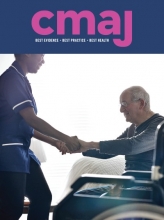Drs. Traeger and colleagues1 identify the continuing increase in societal costs resulting from low-back pain and associated disability. They provide one explanation: that patients are receiving low-value health services from their primary care physicians and that these physicians also underuse treatments known to improve low-back pain outcomes. The emphasis remains on detecting patients with serious physical injuries, despite that perhaps 1% of patients will harbour a serious injury and most pain-related disability is not predicted by injury severity.3 The implication is that many therapies and investigations cause worsened patient outcomes. This implication remains unproven; other explanations are possible.
The present back pain guidelines do not fit with the natural history of low-back pain in primary care: usually, 28%–60% of patients continue to have persistent pain and disability at one year;2,3 patients with back pain in primary care report high visual analogue scale levels, which reflect an extensive activation of a wide neuromatrix4 with high risk for neuroplastic modification; and at least 30% or more of the variation in disability might be explained by patient distress and magnified illness behaviours at first assessment.5 Yetn intensive biopsychosocial treatments6 and back schools7 provide little disability prevention.
Our patients are in severe pain, with high risk for permanent disability and with a brain activation of a wide neuromatrix of mostly instinctual and emotional centres, and they rightly demand our help. Usually, recommending a hot pack won’t cut it.
We may need to accept that the tissue injury model has failed and that a new paradigm is needed but is so far undeveloped. It will need to reflect the experience of primary care and the known natural history of the condition.8 One suggestion would be to measure the brain activations of actual patients in primary care — instead of asymptomatic university students — and then adjust interventions to these activations. Perhaps it is time for a paradigm change.
Footnotes
Competing interests: None declared.











